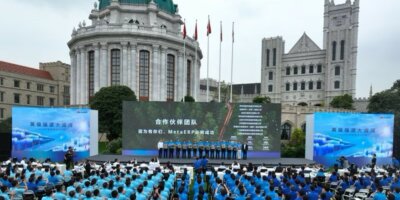
(Source: Shutterstock)
How 5G can enhance agriculture and fisheries in Southeast Asia
5G food: 5G is enabling new agriculture technologies to enhance food production.
In Southeast Asia (SEA), the agriculture sector contributes to about 35% of the region’s employment, of which 60% are smallholder farms. Agriculture also accounts for up to 20% of GDP for countries in SEA: the region is home to two of the world’s largest rice exporters (Thailand and Vietnam), is the top producer and exporter of palm oil, coconut and rubber, and includes the top three exporting countries for pineapple, banana, mango, sugar, coffee, cashew, and cassava.
Smallholder farming remains the backbone of agricultural production in Southeast Asia, with a lack of access to information, markets, and capital trapping these small businesses in a vicious cycle of subsistence farming.
Farmers are facing droughts and ice storms, the rising price of fertiliser and fuel, pandemic-related labor shortages, and supply chain disruptions exacerbated by Russia’s invasion of Ukraine. This means food prices have shot up, hitting their highest levels since 2011.
Enter: technology.
The pandemic accelerated adoption of digital technologies across all sectors and gave rise to AgriTech models. Boosting AgriTech in SEA could bring an end to the food insecurity plaguing the region. Tools like drones, sensors, apps, the Internet of Things (IoT), artificial intelligence (AI), data analytics, and more could improve the efficiency of and yield from smallholder farms.
Despite the increased adoption of AgriTech, the sector remains largely underdeveloped due to numerous challenges and constraints faced by smallholder farmers, such as:
- high labor -intensity with limited access to modern equipment
- lack of access to data
- lack of access to markets, leaving farmers highly dependent on intermediaries
- limited access to formal finance due to lack of collateral to secure financing and lack of data to appropriately assess their credit risk.
That’s why 5G is so critical to modernizing the agriculture sector. Mobile broadband networks reach 96% of the population in the Asia Pacific region, with 1.2 billion current mobile internet users, according to a GSMA study entitled The Mobile Economy Asia Pacific 2022.
If we look back at the technological solutions that would enable food security, a fast and reliable network connection is indispensable. Technologies that enable vertical farming, like what’s offered by Orlar, are also more environmentally friendly, but more can be done.
5G farms reduce waste by removing inefficiencies in the agri-food industry, saving space, time and natural resources, and alleviating some of the current environmental burden.
5G food with a side of tourism
Increasing 5G coverage in the maritime area means that the benefits of technology can also be felt by fisheries. Indonesia’s leading telecommunications company, Telkomsel, collaborated with ZTE corporation to do just that.
A key objective of the collaboration is to accelerate economic growth by enabling the development of the fisheries and marine tourism sectors through the provision of digital connectivity. The potential for success was demonstrated in Norway, where salmon farming company Cermaq launched the first iFarm, enabled by consistent 5G.
In 2019, authorities in Rongcheng touted “China’s first 5G fish farm” equipped with real-time camera technology allowing visitors a 3D experience of underwater life. The technology is also helping assist with feed management.
By making tourism an aspect of the farms, fisheries can avoid the profit loss that environmental sanctions and fishing moratoriums have caused. Huawei enabled the extension of 5G, helping to meet government goals of increasing output while transforming the fisheries into tourist attractions.
Technology isn’t directly making our food yet, but it’s certainly indispensable to those who do.
READ MORE
- 3 Steps to Successfully Automate Copilot for Microsoft 365 Implementation
- Trustworthy AI – the Promise of Enterprise-Friendly Generative Machine Learning with Dell and NVIDIA
- Strategies for Democratizing GenAI
- The criticality of endpoint management in cybersecurity and operations
- Ethical AI: The renewed importance of safeguarding data and customer privacy in Generative AI applications


